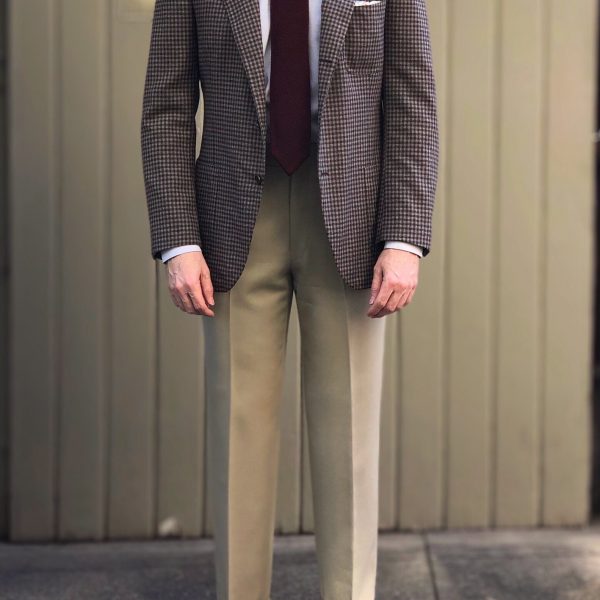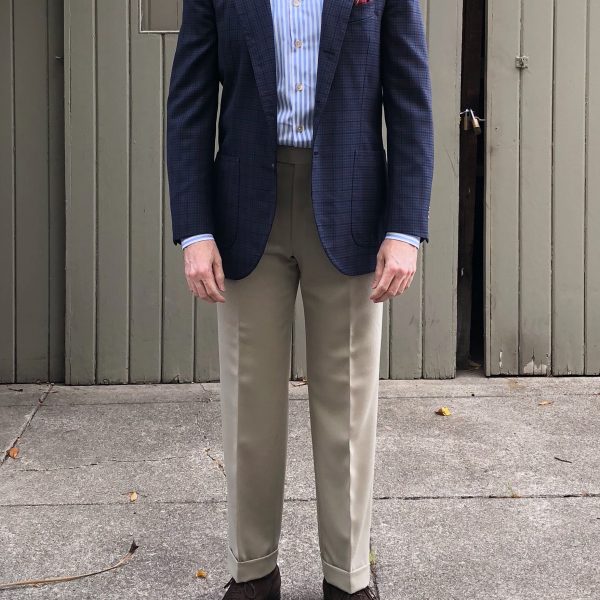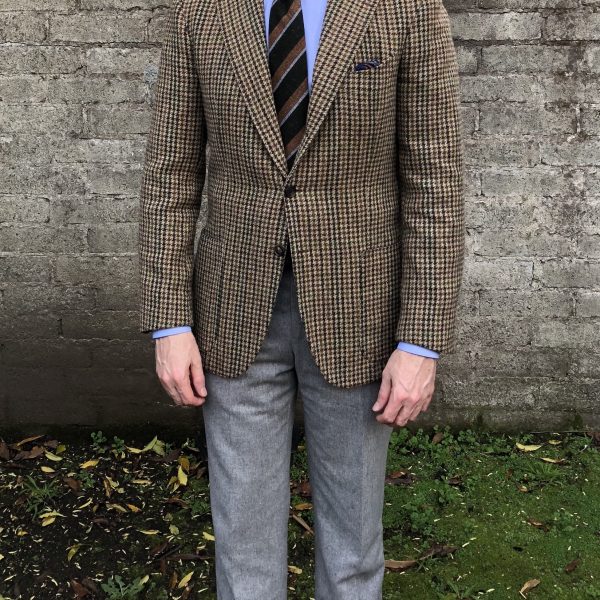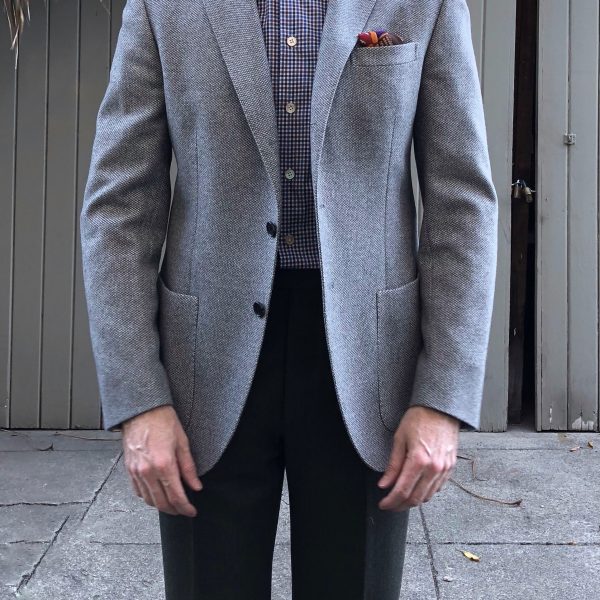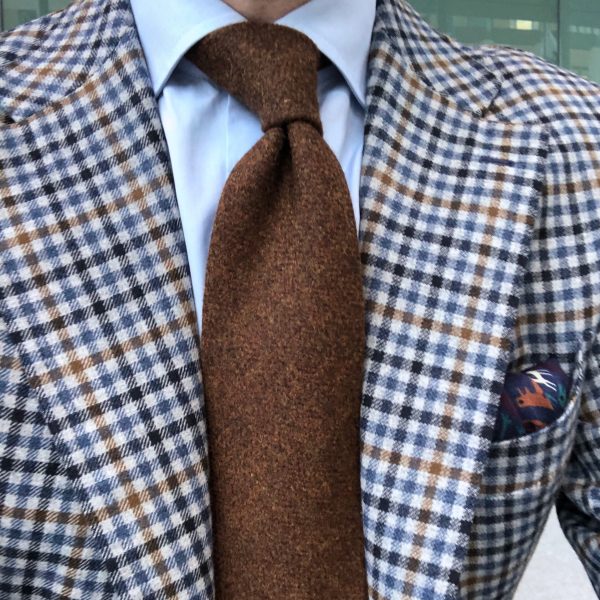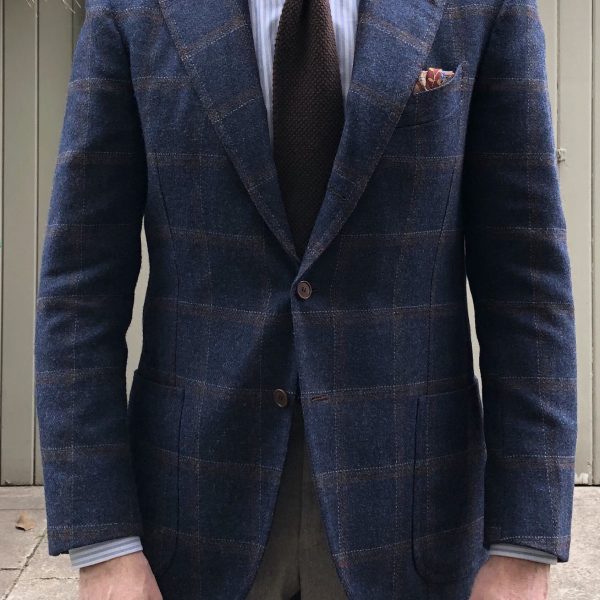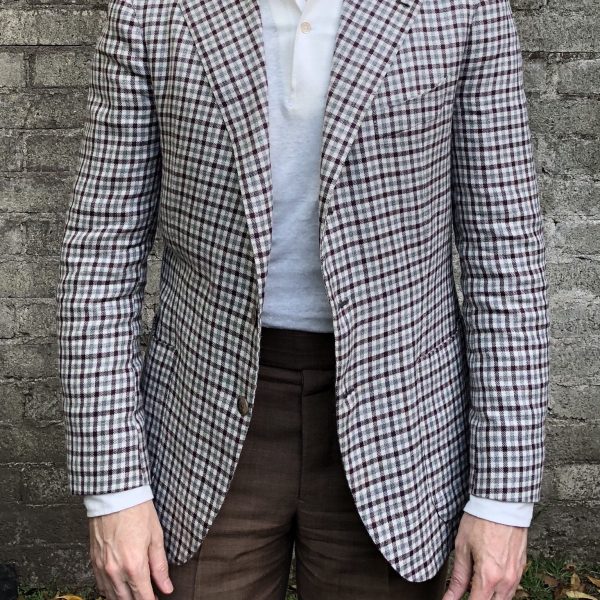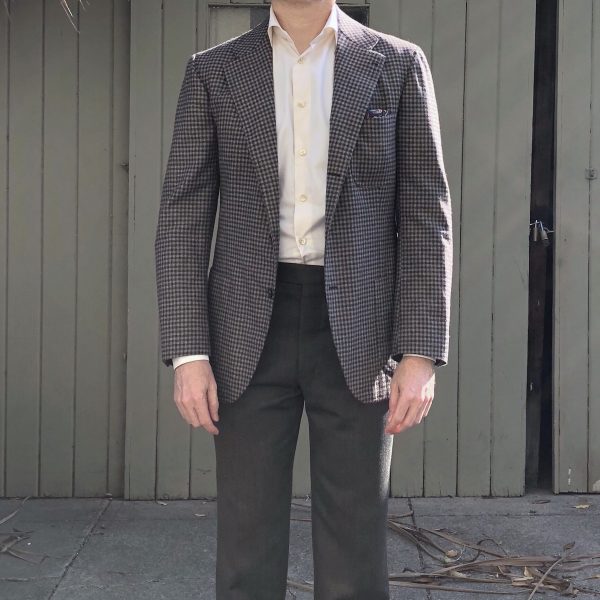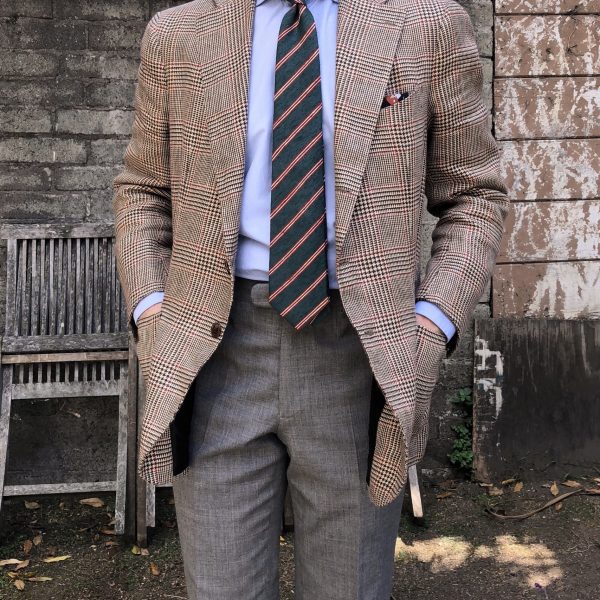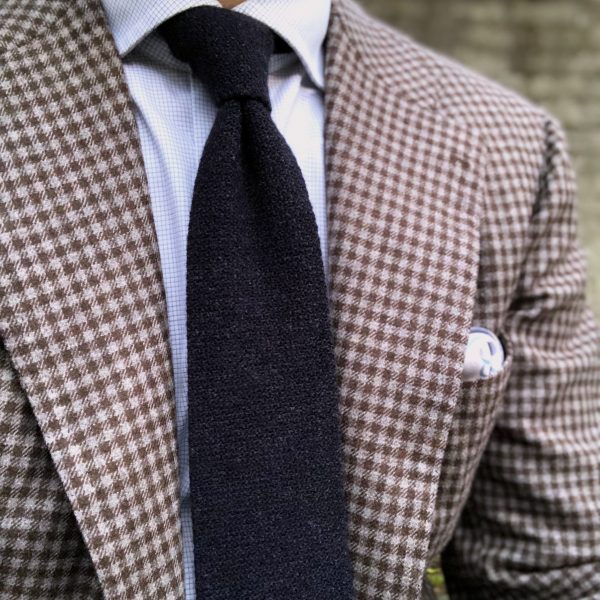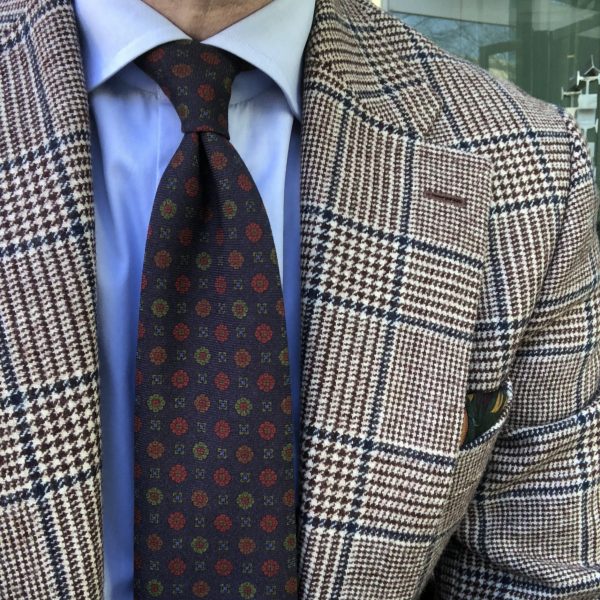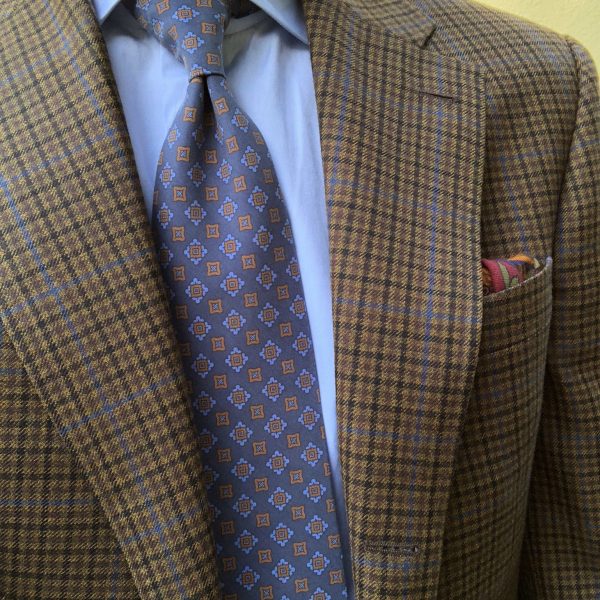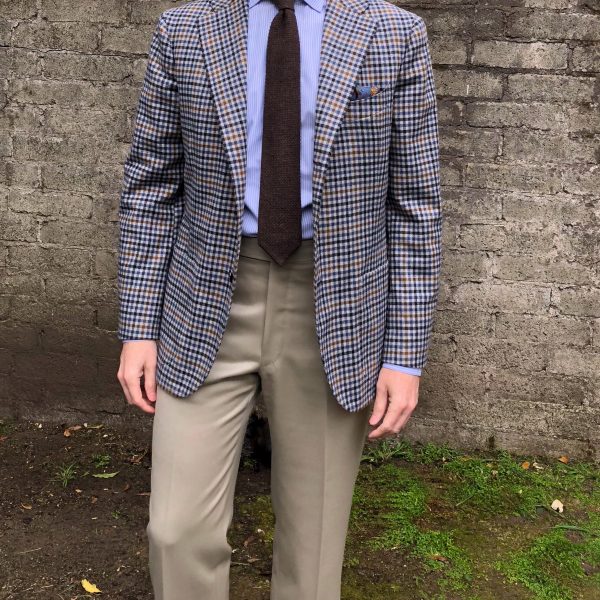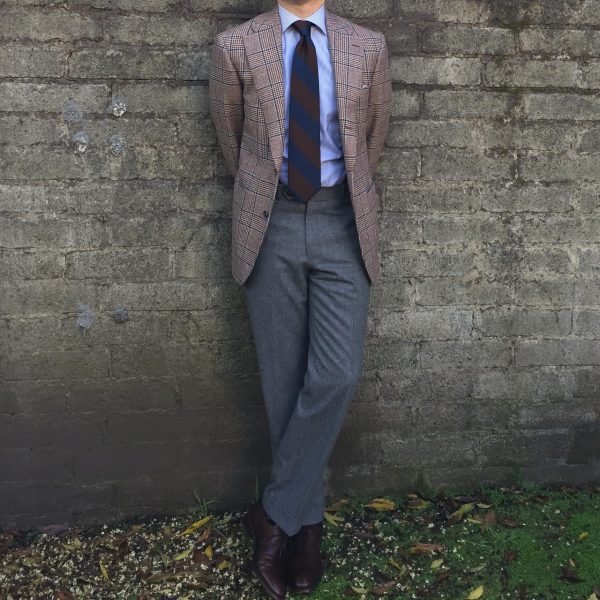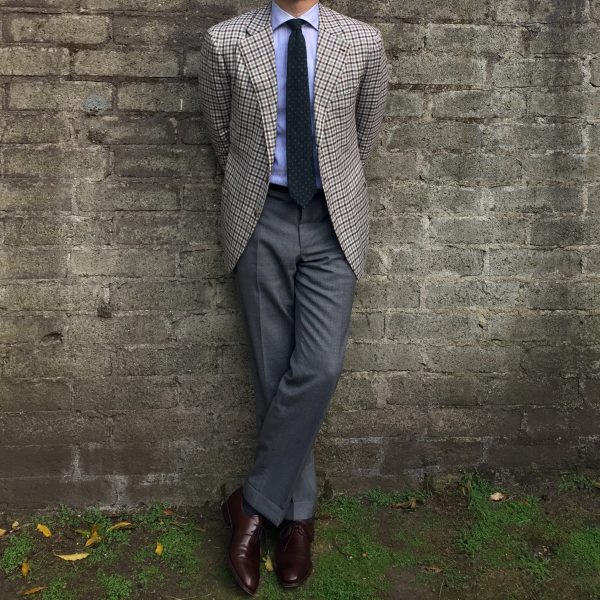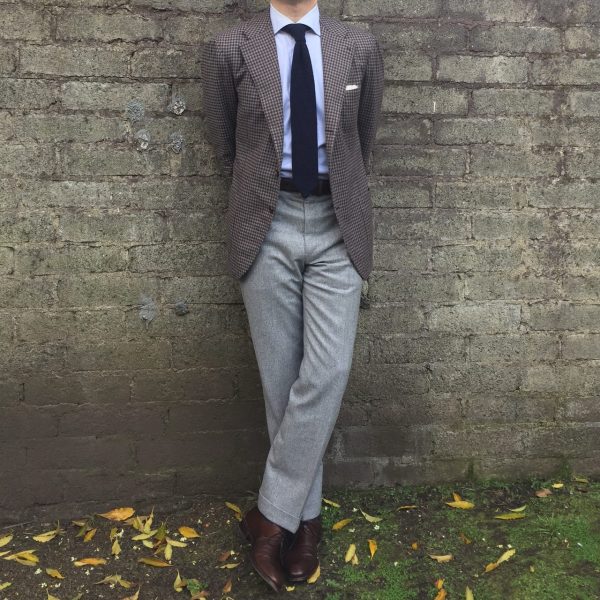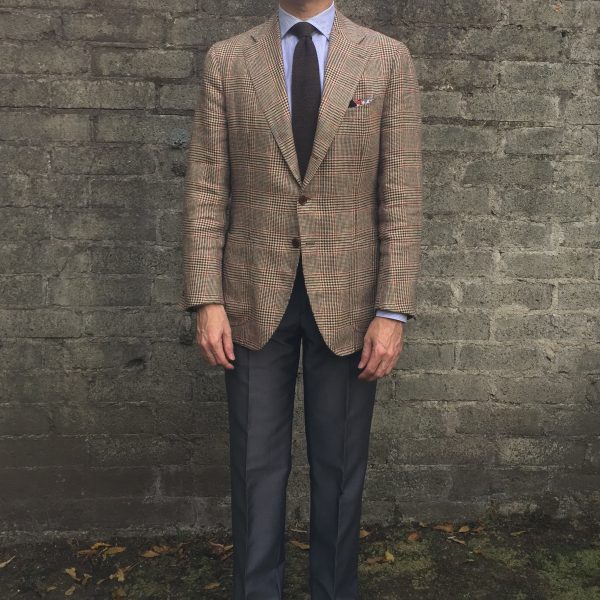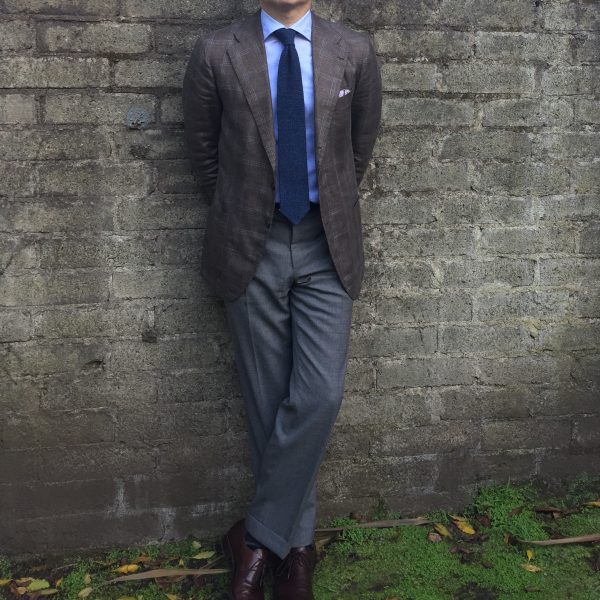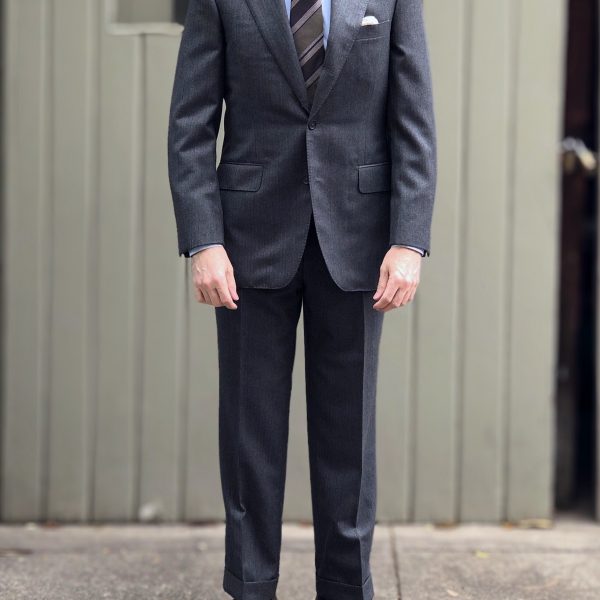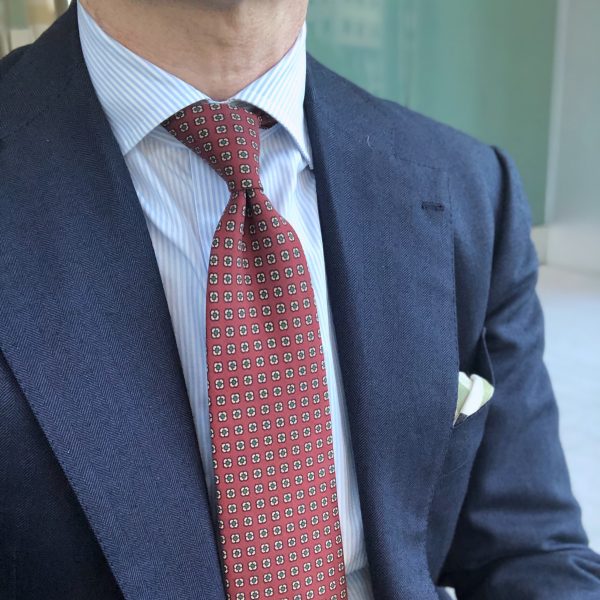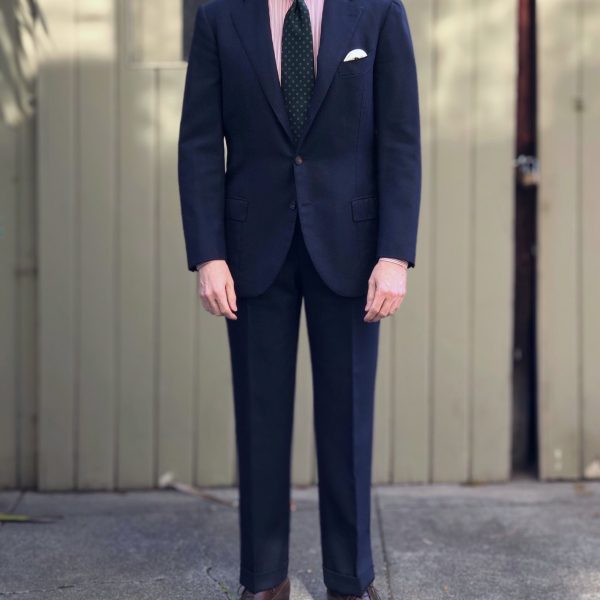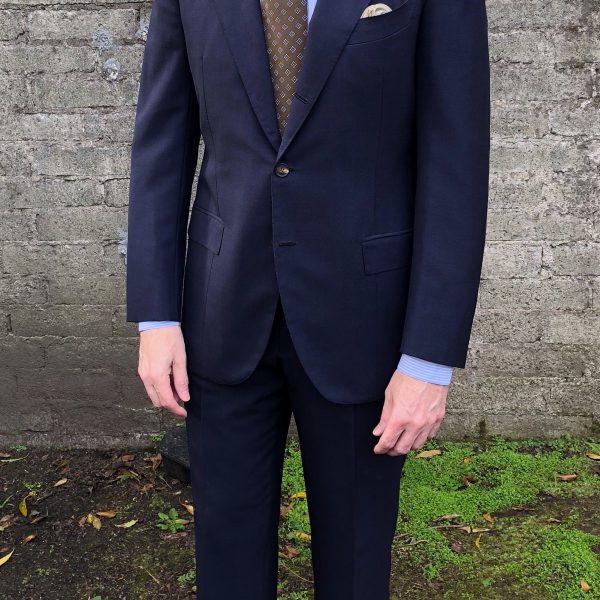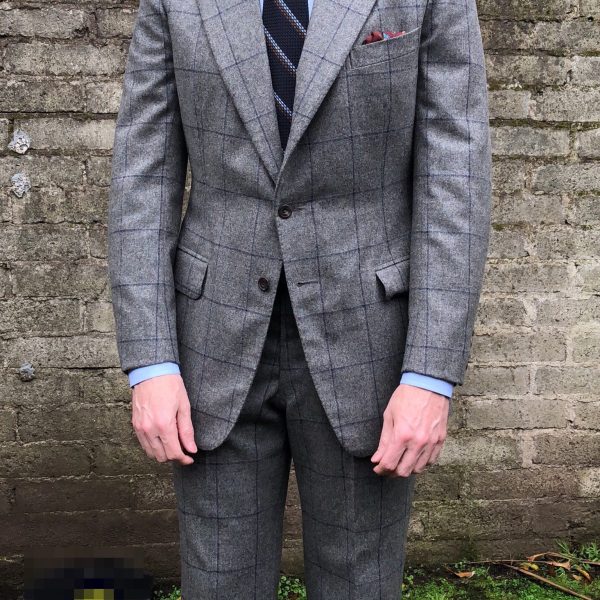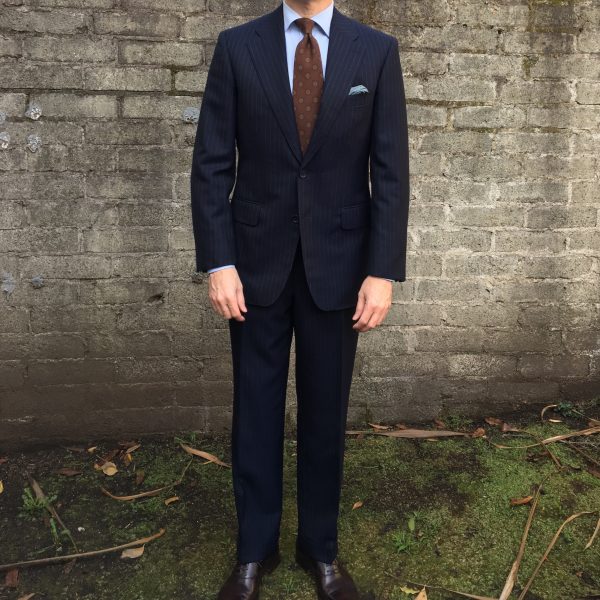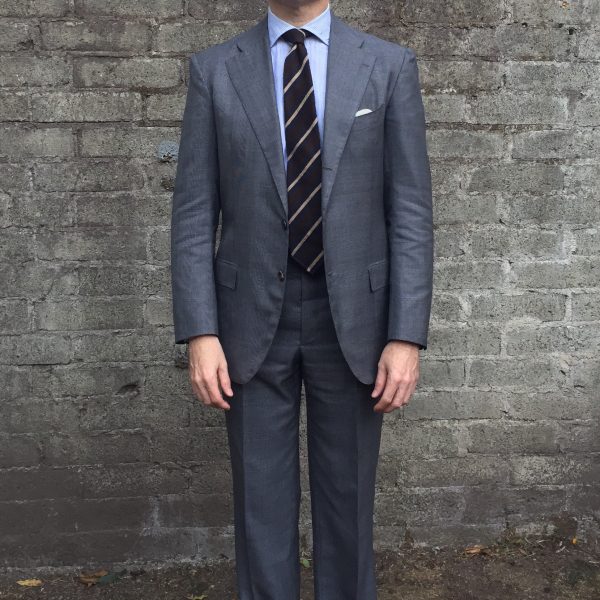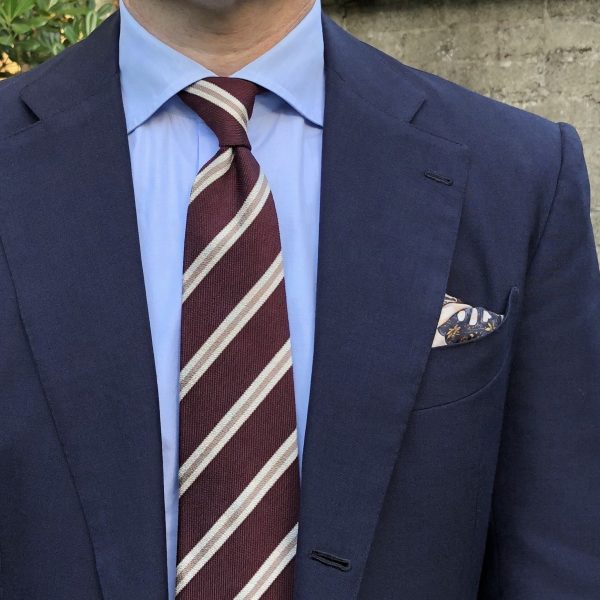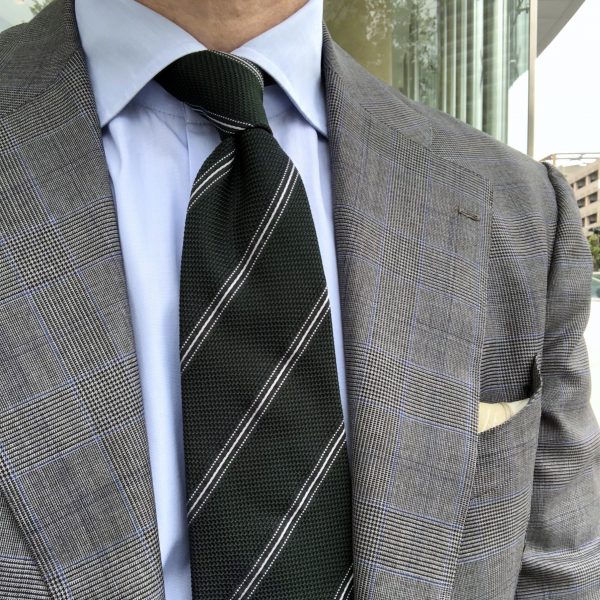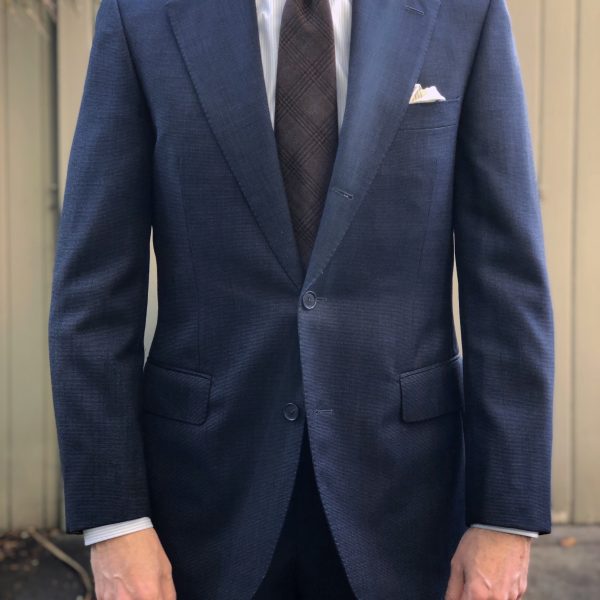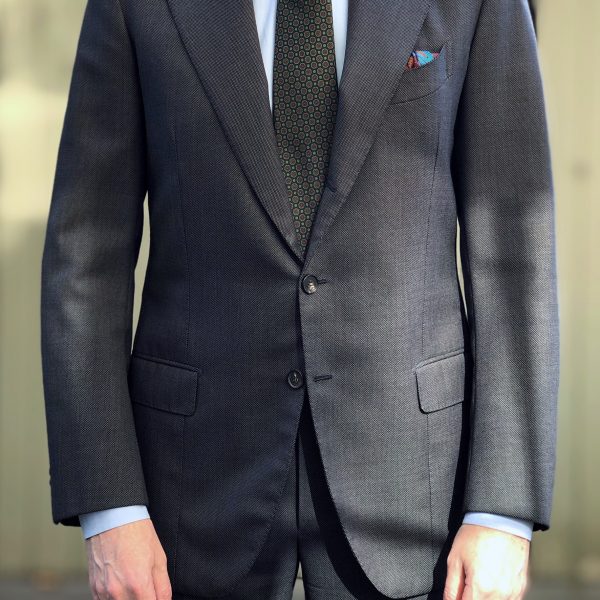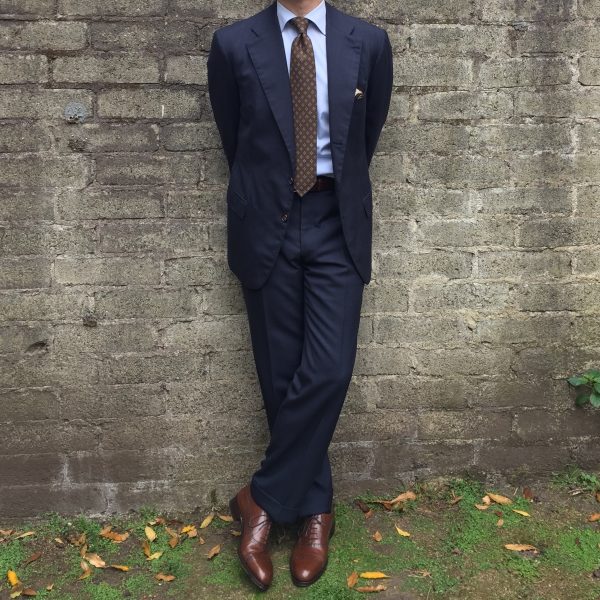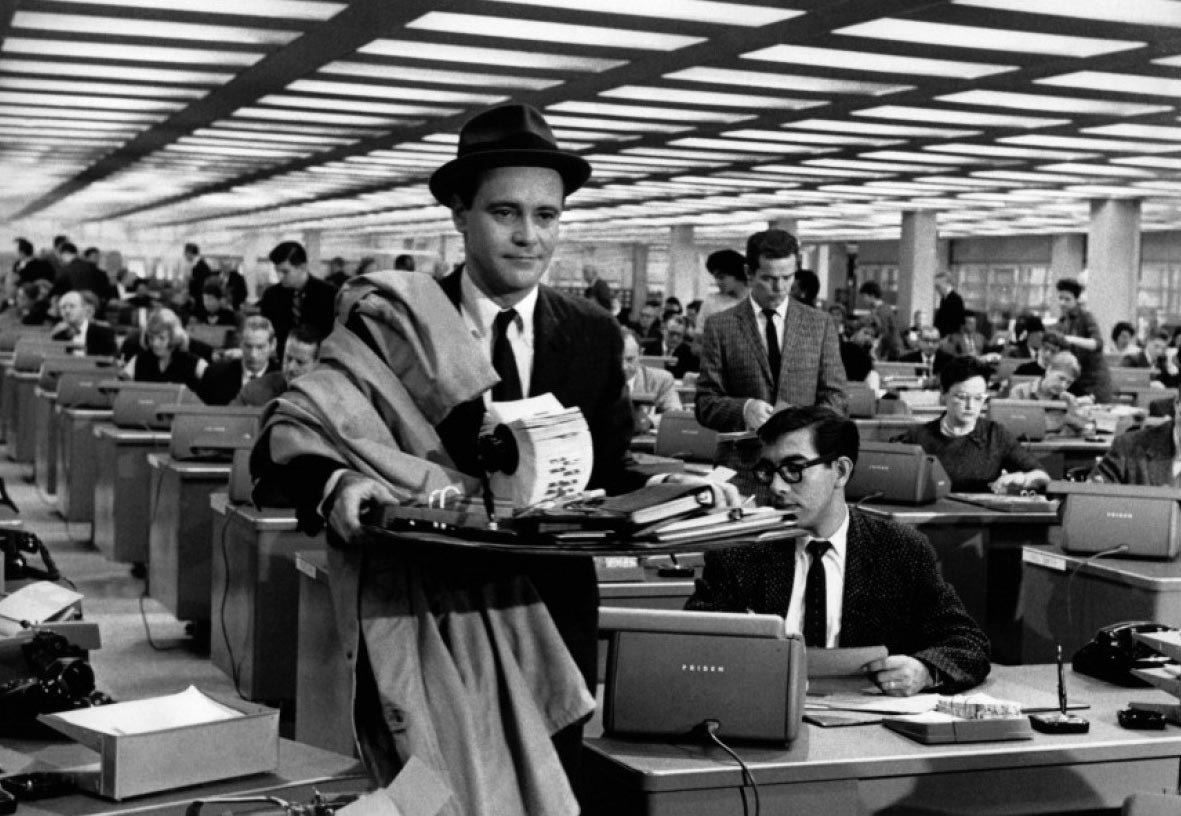
In the 1980s, there was a section of the American book publishing industry dedicated to telling men how to “dress for success.” This was the last era of professional dress codes before things got muddled by the casual Friday movement. As such, there was still room for titles telling men how to wear a coat and tie, presumably so they could get ahead in their professional and private life. The ‘80s was when Alan Flusser, today considered the Godfather of Menswear, published his first two titles: Making the Man and Clothes and Man. Similarly, Charles Hix taught young men how to put together a coat-and-tie rig through his guide Dressing Right. And John Molloy helped popularize the idea of “power dressing” when he wrote his bestseller, Dress for Success.
No one writes books like that anymore, mainly because office dress codes are too open, varied, and nuanced for anyone to dictate from a mountaintop how people should dress for work. In a 1986 article in The New York Times, titled “Admit It or Not, Dress Codes are a Fact of Life,” Molloy is quoted as saying: “people who wear gold chains won’t give their money to people who wear gold chains.” Yet, earlier this year, the top brass at Goldman Sachs told employees they were joining the Silicon Valley crowd by allowing its 36,000 employees to shed their suits.
For men who still like to wear tailored clothing, this provides a problem: how do you dress in a way that you want without standing out? When everyone else is in jeans and t-shirts, how do you wear a tailored jacket without having people regularly ask why you’re so dressed up?
The good news is that, according to social psychologists, we often overestimate how much others notice our actions and appearance. In a 2000 issue of the Journal of Personality and Social Psychology, three researchers published the results from an experiment they conducted at Cornell University, where they made students wear an embarrassing Barry Manilow t-shirt and estimate how much they thought others noticed. On average, people predicted half the room could remember the embarrassing visage that graced their body. But, when surveyed, only about 25% of people did. Psychologists call this particular anxiety the “spotlight effect.” In other words, the spotlight effect makes you feel like there’s a spotlight on you because you’re self-obsessing. But ironically, others are too self-obsessed to notice you.
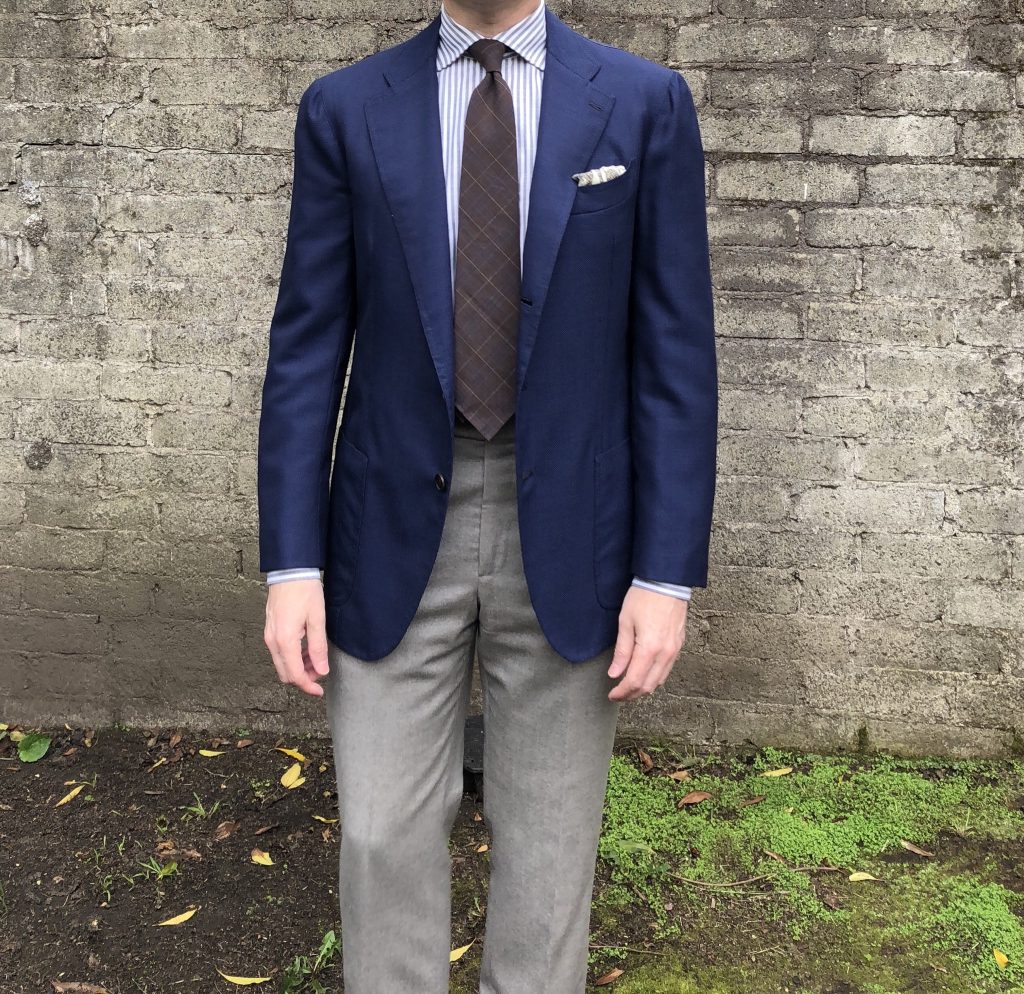
Still, that doesn’t assuage most people’s fears, and many people still have to operate within the real constraints of workplace expectations. It’s impossible to say how anyone given person should solve this problem, but I particularly like Ben’s approach. Ben’s a lawyer in San Francisco, one of the most dressed-down cities in the United States (home to Levi’s and the hoodie-clad tech crowd). A few years ago, his office ditched traditional attire in favor of “Valley casual.” “Most men in my office wear jeans, sneakers, and collared shirts,” he says. “Of course, it’s a law office, so people wear suits and sport coats when they’re going to court, but I’m usually more dressed up than others.”
A lot of what Ben wears won’t be news to long-time readers of Put This On. To stay on the slightly more casual side of tailored, he wears sport coats with wool trousers, rather than dark worsted suits. Ben often forgoes the tie and wears slightly more casual shoes such as lace-up derbies. Instead of stark white dress shirts, he prefers light blue (solid or striped). His outfits are also reasonably subdued — there aren’t any wacky accessories, loud patterns, or unusual combinations. His trousers are typically mid-gray or tan; his jackets blue or brown.
For men who are just starting to wear tailored clothing, there’s always the temptation to make an outfit pop in some way, so they don’t look like the average corporate drone. But a lot of what’s unique about Ben’s clothes is the cut. The shoulders are soft and slightly sloping. His jackets have a bit of fullness across the shoulders and chest, while also tapering down to the waist. The quarters — the front part of the coat below the buttoning point — nicely sweep back without looking exaggerated. His collar points are also long enough to tuck underneath his lapels, and the overall proportions are well balanced. The clothes as a whole look stylish while also being professional enough for a conservative environment.
For client-facing work, Ben wears suits in navy birdseye, faint glen plaids, and open-weave tropical wools. His ensembles here are a bit more traditional — and perhaps easier to pull off in law, consulting, and financial sectors — but the combinations come together well because he has a good sense of taste. “I’ve built a tie collection that allows me to wear things with either suits or sport coats,” he says. “For suits, I mostly wear ties that are made from silk twill, Macclesfield print, or ancient madder. Wool challis and wool-cashmere ties go with suits or sport coats, pretty much only in the fall and winter. Chunkier wool ties or ones with a more casual pattern only get worn with sport coats. The same happens in spring-summer: linen, cotton, and shantung ties with sport coats, then conservative patterns with suits.”
I ask Ben if he gets comments about his clothes while at work, and if so, how does he deal with them. “I’m sure I stand out in the office,” he admits. “But I’m not particularly sensitive about whether people think I’m overdressed. I recognize there’s a social function to dress — I try to dress within the rules of my office, but I’m also aware that I’m a bit overdressed relative to the norms. Mostly, I just try to be nice and respectful of all of my coworkers. I hope that they’ll just accept that my deviations from the norms are eccentricity. I’m more concerned about whether my clothing is making other people uncomfortable, rather making me uncomfortable. Really, people only say anything when they think I look particularly nice. I otherwise don’t get a lot of comments about my clothes.”
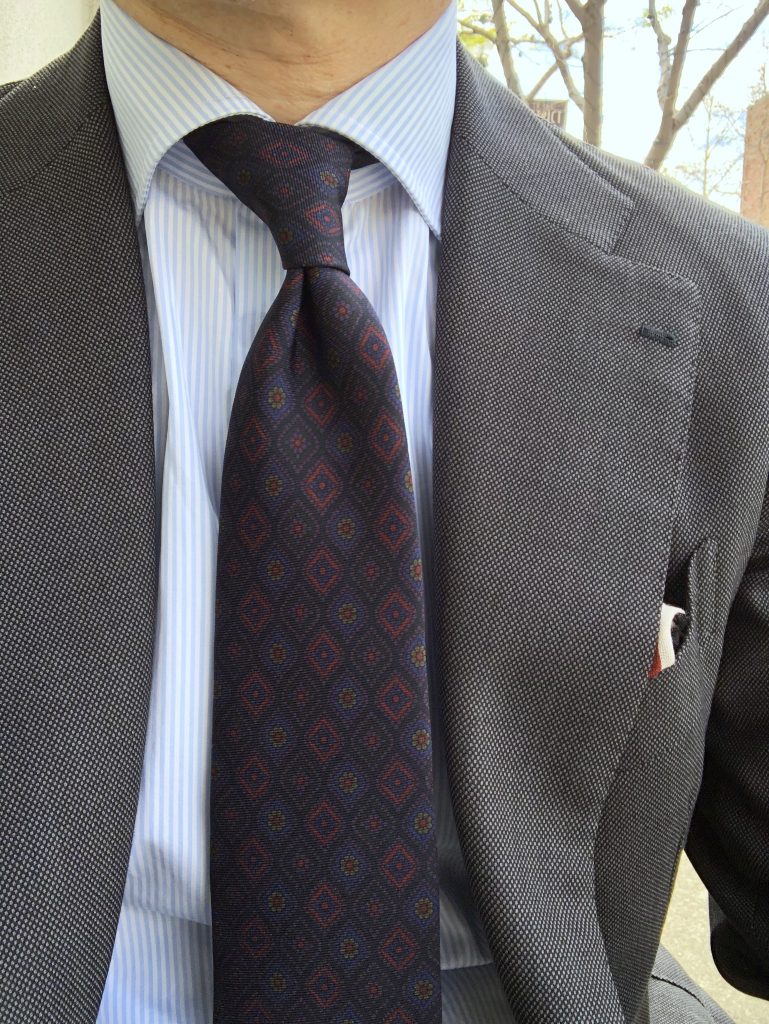
Ben’s Suggestions for Building a Tailored Wardrobe
It’s easier for Ben to wear tailored clothing since he’s a lawyer, even if he’s in a casual city. You’ll have to find the boundaries at your office, but if you’re willing to be a little more dressed up than most, we also don’t think it’ll be the end of the world. You may get some comments at first, but people will get used to it — perhaps even appreciate it. If you’re looking to build a tailored wardrobe, here are Ben’s suggestions:
Get Seasonal Fabrics
“For spring-summer, I like sport coats in wool-silk-linen blends, which often have an interesting texture. Pure linen can also be great, as are open-weave tropical wools. Certain tropical wools, such as Fresco, can be used for BlazerSuits, where you have a dark suit that can also be used as a sport coat. For shirts, lightweight cotton and linen-blends are useful for hot days. I also like long-sleeved polos and popovers.
My fall-winter sport coats tend to be either tweed or a wool-cashmere blend. The tweeds are the real kind — prickly — but also come in the worsted variety that some people call faux tweed (a worsted fabric with a tweed check pattern). Trousers are usually flannel, cavalry twill, or a heavier worsted with texture. Shirts are brushed cotton flannel or oxford.
I’ll just confess to having a lot of pocket squares — they’re fun! — and so have some that are also seasonally split. The spring-summer ones tend to be more brightly colored and have warmer shades, which I find to complement the warmer and brighter colors of other spring-summer pieces.”
Keep Things Harmonious
“I try to keep things fairly conservative and harmonious. That generally means:
- Varying the scale of the patterns when they’re close to each other, that way you don’t get a moiré effect.
- Try to keep to two or three patterns, at most. Avoid four patterns unless you’re feeling really confident or the fourth pattern is extremely subtle.
- Colors should complement each other and should be similar in terms of warmth and coolness. Although warmer and cooler colors can look great together in certain cases — use your eye.
- Consider your textures and try to not mix things that are too similar. This works even for more formal combinations that involve a worsted business suit: the silk of the tie and a white linen square are different textures from the wool of the suit. But you could also wear a wool challis tie and a silk square and have a range of textures.
That said, try to make it interesting yourself and feel free to experiment if the situation allows it.”
Develop Your Eye
“Look at photos of people who are considered well-dressed. Find a system for saving images that appeal to you and return to those photos every once in a while. Eventually, even if you can’t articulate the reasons, you’ll begin to recognize more easily what you like and don’t.
At the same time, try stuff on. Try to find pieces that provide you with the silhouette and fit that you like seeing on others. Don’t buy too much at once, but don’t be afraid to try something, as long as you can truly afford it. If it doesn’t achieve what you want after you’ve worn it for a while, sell it or give it away. It’s a process of self-education in which you’re teaching yourself both to recognize what you like and discovering what’s available in the market that will make you look the way you like.”
